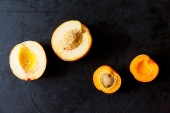
 3
3





Permaculture...picking the lock back to Eden since 1978.
Pics of my Forest Garden

 2
2




Some places need to be wild
 4
4




 5
5




 1
1




Building regenerative Christian villages @ https://jesusvillage.org/
100+ Homesteading Software Tools @ https://homestead.tools/










 3
3




Some places need to be wild
 2
2




Paul Eusey wrote:
Some might call me pessimistic and others would call me pragmatic. I would love to be more optimistic, but the more I learn about space, planets, physics, and the universe, the more pragmatic I become.
Permaculture...picking the lock back to Eden since 1978.
Pics of my Forest Garden










 2
2




Some places need to be wild




Permaculture...picking the lock back to Eden since 1978.
Pics of my Forest Garden










 2
2




Some places need to be wild
 3
3




Eric Hanson wrote:the probes we send are to the flattest parts of Mars to make landing easier—just think, which would be easier to parachute into, the Great Plains or a mountain valley!

|
This parrot is no more. It has ceased to be. Now it's a tiny ad:
The new purple deck of permaculture playing cards
https://www.kickstarter.com/projects/paulwheaton/garden-cards
|






